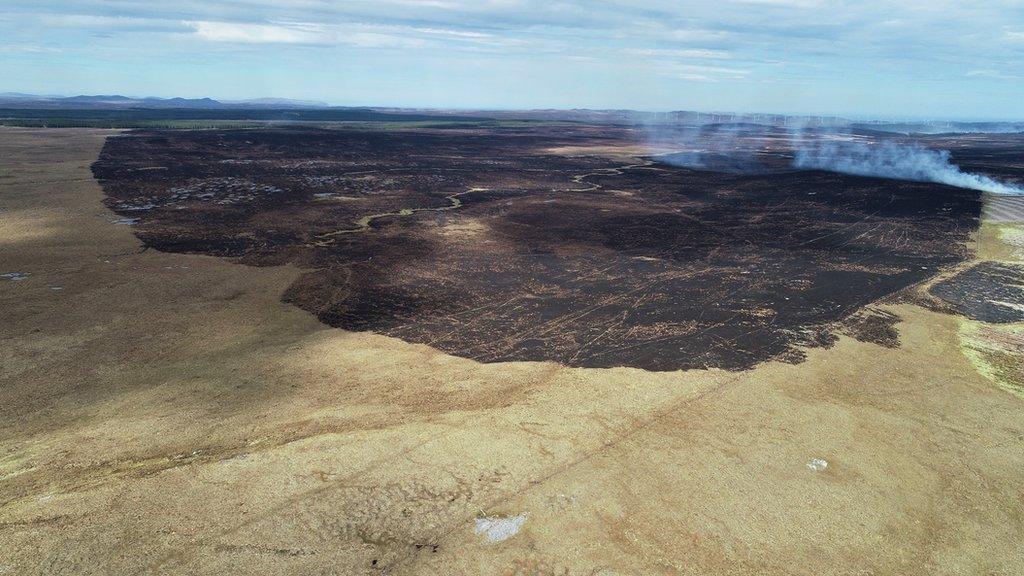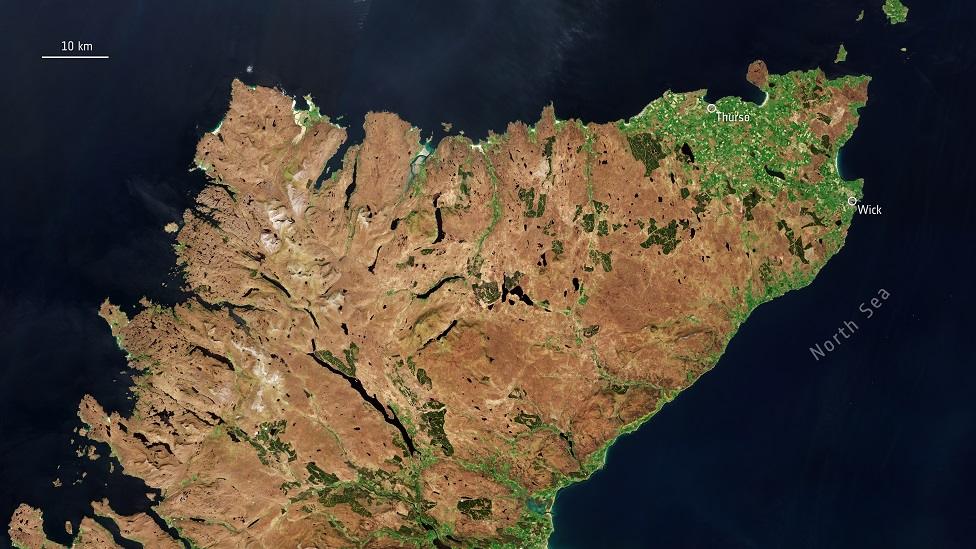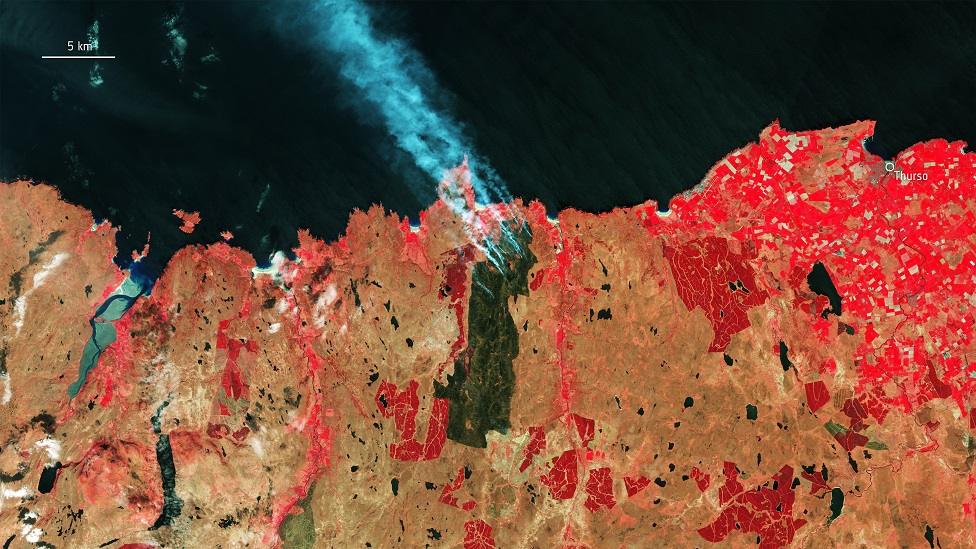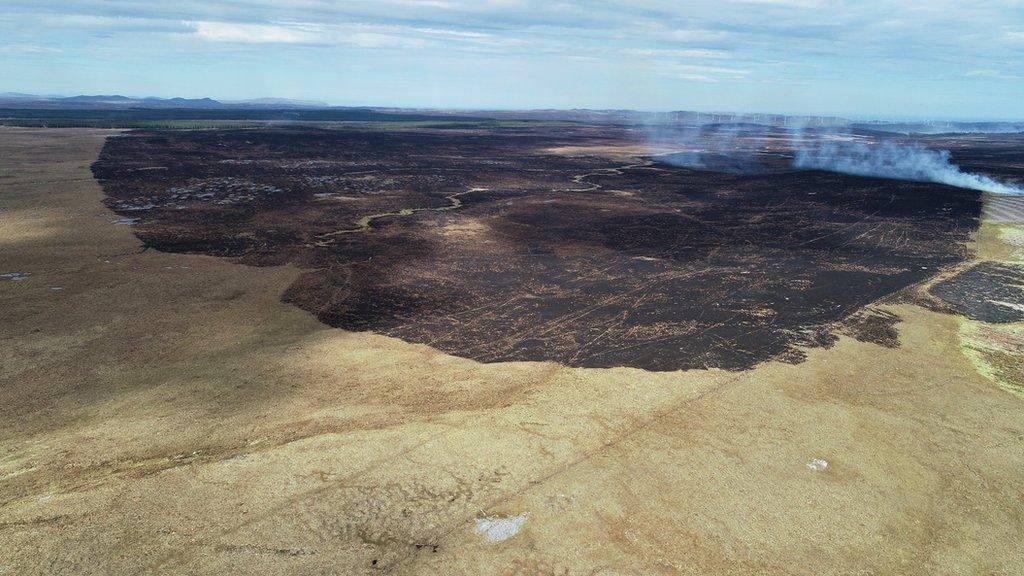Fire on Europe's biggest peatbog seen from space
- Image source, Contains modified Copernicus Sentinel data (2018, 2019), processed by ESA
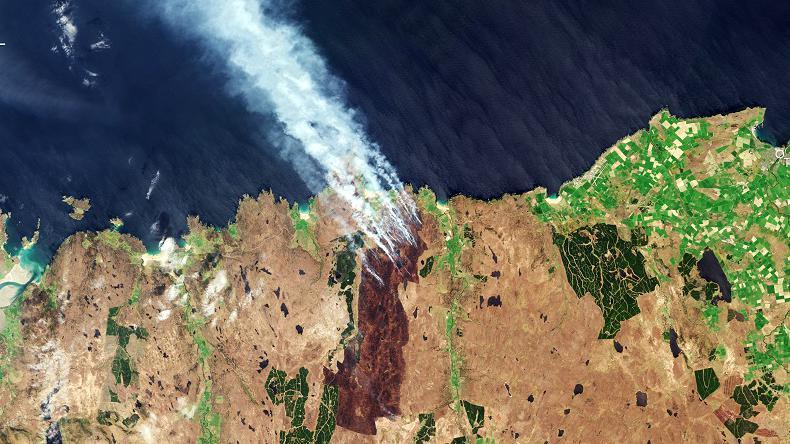
Image caption, European Space Agency scientists have processed satellite images of a wildfire that burned across Scotland's Flow Country peatlands in May 2019
1 of 5
At a glance
A series of images have been produced showing Scotland's vast Flow Country and a fire that burned across parts of it three years ago
The Flow Country is Europe's largest blanket bog peatlands
In May 2019, a wildfire burned for six days and affected about 22 sq miles
European Space Agency scientists have processed satellite images showing the extent of the damage caused
- Published
Scientists have produced a series of images of Europe's largest blanket bog peatlands - and a wildfire that burned across parts of it for six days.
The Flow Country, an area of lochs, hills and treeless peatbogs, stretches across almost half a million acres of Caithness and northern Sutherland.
In May 2019, about 22 sq miles (5,700 hectares) were affected by a wildfire between Melvich and Strathy.
An estimated 700,000 tonnes of greenhouse gases were released into the atmosphere during the incident, according to a WWF Scotland study.
Firefighters from Sutherland and Caithness, estate workers and RSPB staff fought the flames. Helicopters also water bombed the fire.
European Space Agency (ESA) scientists processed data gathered by Copernicus Sentinel satellites to create the series of images.
They include an image taken on a "rare cloudless day" in 2018 showing the vast extent of the Flow Country, and others of the fire and the damage it caused.
The images were shown earlier this week at the UK National Earth Observation Conference in Leicester.
Unesco status
ESA said it was estimated the carbon stored in the Flow Country's peat equals 100 years’ worth of Scotland’s fossil fuel emissions.
The agency said: "Satellite imagery can be used to create maps of peatlands, measure soil moisture, and detect disturbances such as fires, making it cheaper and easier to monitor and preserve these valuable landscapes."
Unesco World Heritage status is to be sought for parts of the Flow Country.
A bid for the internationally-recognised designation is to be made next year.
The Flow Country Partnership hopes to secure Unesco status for seven areas totalling 49,421 acres (20,000ha), which it believes meets the required criteria.
Related topics
- Published18 November 2019

- Published22 May 2019
